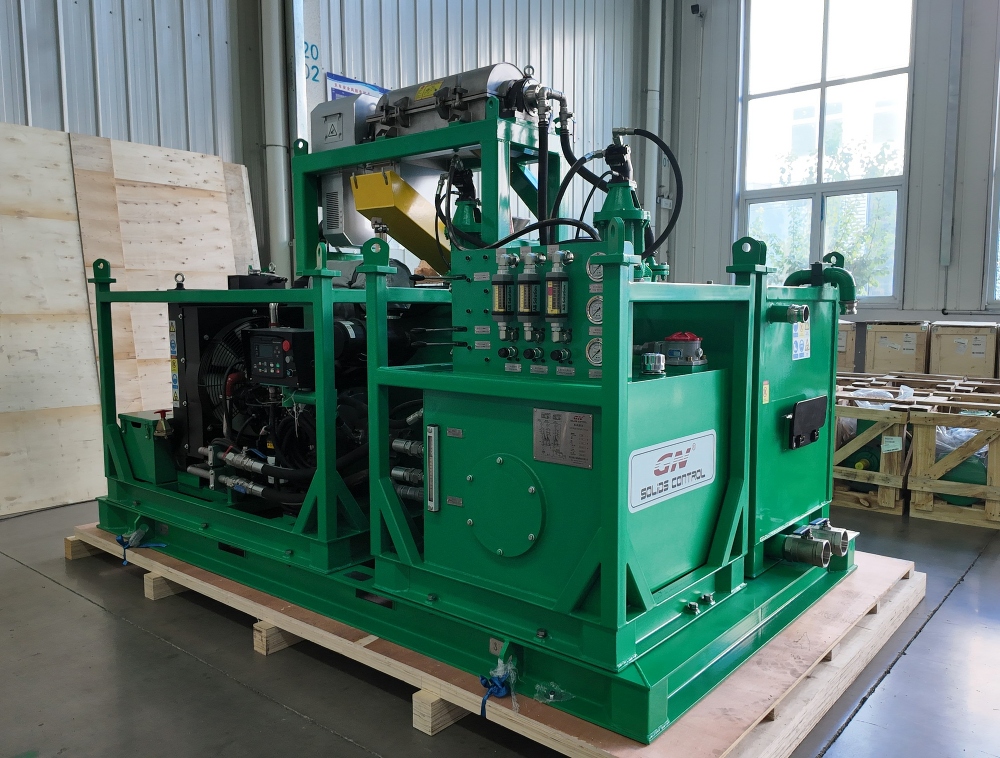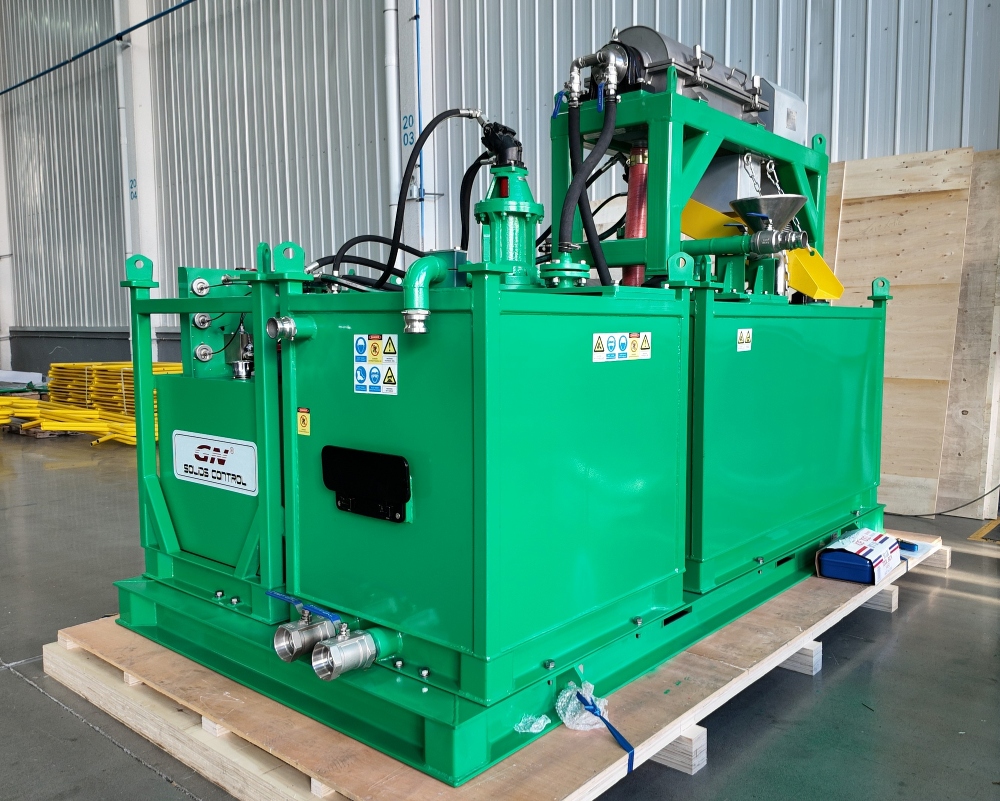


GN Solids Control is a Chinese company that specializes in the design, manufacturing, and distribution of solids control equipment and waste management systems for the oil & gas drilling, HDD (Horizontal Directional Drilling), CBM (Coal Bed Methane), and environmental industries.
A Hydraulic Decanter Centrifuge is a critical piece of equipment for modern diamond core drilling, especially in mineral exploration where maintaining drilling efficiency and recovering uncontaminated core samples is paramount.
Here’s a detailed breakdown of its role, how it works, and why companies like GN Solids Control are relevant suppliers.
1. The Role in Diamond Core Drilling
In diamond core drilling, a drill string with a diamond-impregnated bit cuts a cylindrical core of rock. Drilling fluid (often called “mud”) is pumped down to:
-
Lubricate and cool the diamond bit.
-
Remove the small rock cuttings from the hole.
-
Stabilize the borehole wall.
-
Prevent contamination of the core sample.
Over time, the fluid becomes loaded with fine drilled solids (often called “sludge”). If these fines are not removed, they cause:
-
Reduced Penetration Rate: Abrasive fines grind against the core, creating a thick sludge that slows drilling.
-
Poor Core Recovery: Contaminated fluid can plug the core barrel.
-
Increased Wear: Abrasive particles increase wear on pumps, the drill bit, and other components.
-
Inaccurate Samples: Fine particles can infiltrate and contaminant the core sample, making geological analysis difficult.
The decanter centrifuge is the primary tool for removing these ultra-fine solids, typically in the 2 to 7 micron range.
2. How a Hydraulic Decanter Centrifuge Works
The “hydraulic” part refers to how the centrifuge’s back-drive system is powered. Instead of using complex electrical variable frequency drives (VFDs) or mechanical pulleys for speed control, it uses a hydraulic power system.
Basic Operating Principle:
-
Feed: The dirty drilling fluid is pumped into the centrifuge through a stationary feed tube.
-
Rotation: The fluid enters a horizontally mounted rotating assembly (the “bowl”) and a conveyor screw inside it. Both rotate at high speeds (typically 1,500 to 4,000 RPM), creating centrifugal forces thousands of times greater than gravity.
-
Separation: The heavier solids are flung against the inside wall of the bowl. The cleaner liquid forms an inner layer.
-
Conveying: The conveyor screw (which rotates slightly slower or faster than the bowl) continuously scrapes and pushes the settled solids towards the narrow end of the cone (the “beach”), where they are discharged.
-
Discharge: The cleaned liquid (effluent) overflows weirs at the large end of the bowl and is returned to the active drilling fluid system. The dried solids are ejected from the other end.
Key Advantage of a Hydraulic System for Drilling:
-
Robustness: Hydraulic motors are incredibly durable and better suited to handle the vibrations, dust, and harsh conditions of a drill site than sensitive electronic motors and drives.
-
High Torque: They provide high starting torque, which is needed to get the heavy bowl rotating, especially under load.
-
Simple Control: Speed control is often achieved with a simple manual valve, making it straightforward for drill crews to operate.
-
Compactness: The hydraulic power pack can be separate, allowing the centrifuge itself to be more compact.
3. Benefits for Diamond Core Drilling
-
Maintains Mud Properties: Efficiently removes fine solids, preserving the designed density and viscosity of the drilling fluid.
-
Increases ROP: By reducing bottom-hole balling and abrasion, the diamond bit can cut faster, significantly improving the Rate of Penetration (ROP).
-
Improves Core Quality: Cleaner fluid means less contamination of the core sample, leading to more accurate geological and assay data.
-
Reduces Downtime: Less wear on pumps and bits means fewer replacements and less maintenance.
-
Saves Money: Extends the life of expensive drilling fluid (e.g., polymer-based muds) and reduces overall fluid consumption.
-
Environmental Benefit: Minimizes the volume of waste generated at the drill site by dewatering the solids.
4. GN Solids Control’s Role
GN Solids Control is a major manufacturer of such equipment. For diamond core drilling, they would typically offer:
-
Specific Models: They manufacture robust, smaller-to-medium-sized decanter centrifuges perfect for the flow rates and space constraints of core drilling rigs. A common model for this application might be their GNLW series (e.g., GNLW223 or GNLW363).
-
Hydraulic Drive Options: Many of their models are available with a hydraulic back-drive option, making them ideal for the drilling industry.
-
Mobility: They can supply centrifuges mounted on skids or trailers for easy movement between drill sites.
-
Complete Packages: They can provide not just the centrifuge, but also the supporting equipment like slurry pumps, tanks, and shakers to create a complete, integrated solids control system for a core drilling operation.
Key Specifications to Consider:
When selecting a centrifuge for core drilling, drillers would look at:
-
Bowl Diameter: e.g., 10″, 14″, 18″ (Smaller is more portable for exploration).
-
G-Force: Higher G-force removes finer solids.
-
Flow Rate Capacity: Must match the flow rate of the drilling pumps.
-
Power Source: Hydraulic vs. Electric (Hydraulic is often preferred for rig compatibility).
-
Portability: Weight and footprint on the drill site.
In summary, a hydraulic decanter centrifuge is not just an accessory but a productivity multiplier for diamond core drilling. Companies like GN Solids Control provide the reliable, field-proven equipment that makes this efficiency possible.
For more cases in detail,find MichaelSong below to have a prompt response.
Whatsapp: + 86 178 0179 9913
Email: michael@gnsolidscontrol.com/michael@gnseparation.com